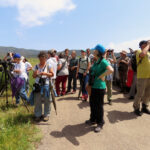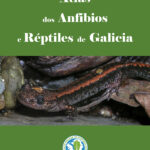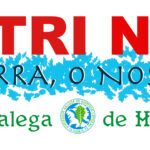Antela Lagoon and Veiga de Gomareite
The drainage of the lagoon Antela (which was part of Veiga de Gomareite), the alluvial floodplains in A Limia, and the correction and diversion of most of the river courses, triggered the most dramatic extinction episode over the last centuries in Galicia, and also razed other populations which are nowadays considered endangered species. As a consequence of those hydrological transformations and of the subsequent abandonment of extensive farming, almost every semi-natural humid grassland disappeared. Moreover, the ones that subsisted are now very degraded. This causes severe population declines in the species associated to such locations, and several of them are catalogued nowadays as endangered species in the Iberian Peninsula, in Europe or even worldwide.
Protection areas, as the SCI (Site of Community Importance) of Veigas de Ponteliñares, the ZEPA (Special Protection Area for Birds) of A Limia, and the Biosphere Reserve “Area de Allariz”, barely contributed to improve the situation of the relict wetlands and the most endangered species. Furthermore, the lack of a communication strategy for the rural development opportunities offered by these areas aggravated neighbourly opposition against them.
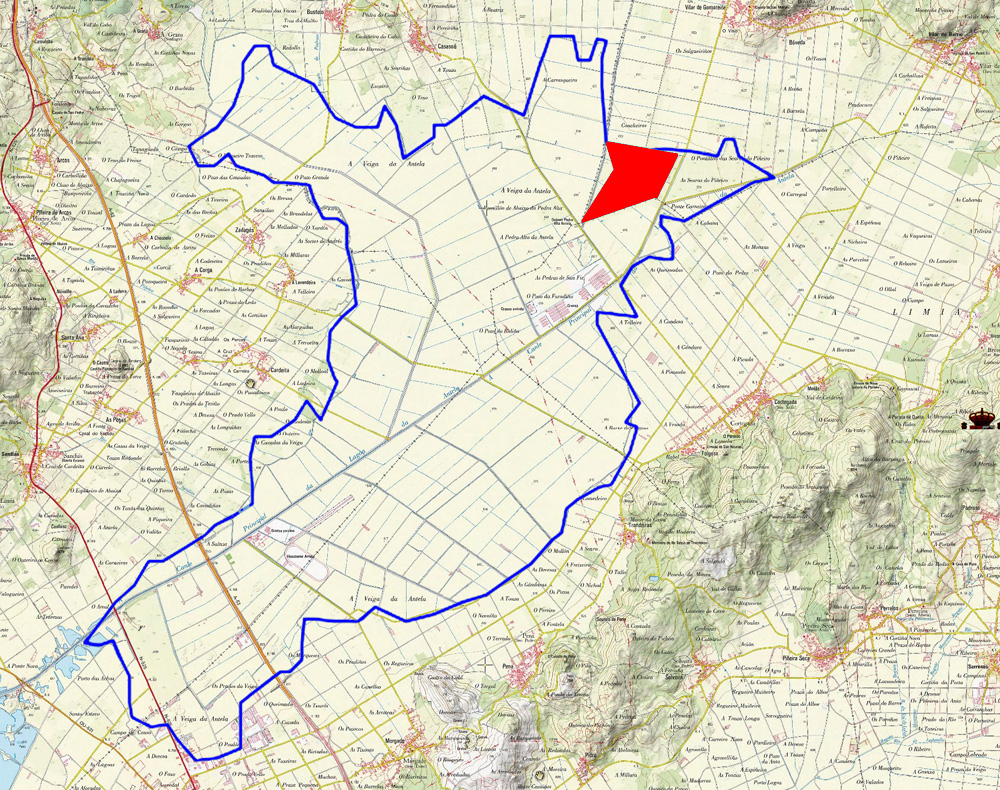
Situación da Veiga de Gomareite (vermello) na antiga Lagoa de Antela (perímetro en azul) /
Location of Veiga de Gomareite (in red) in the ancient lagoon Antela (perimeter in blue)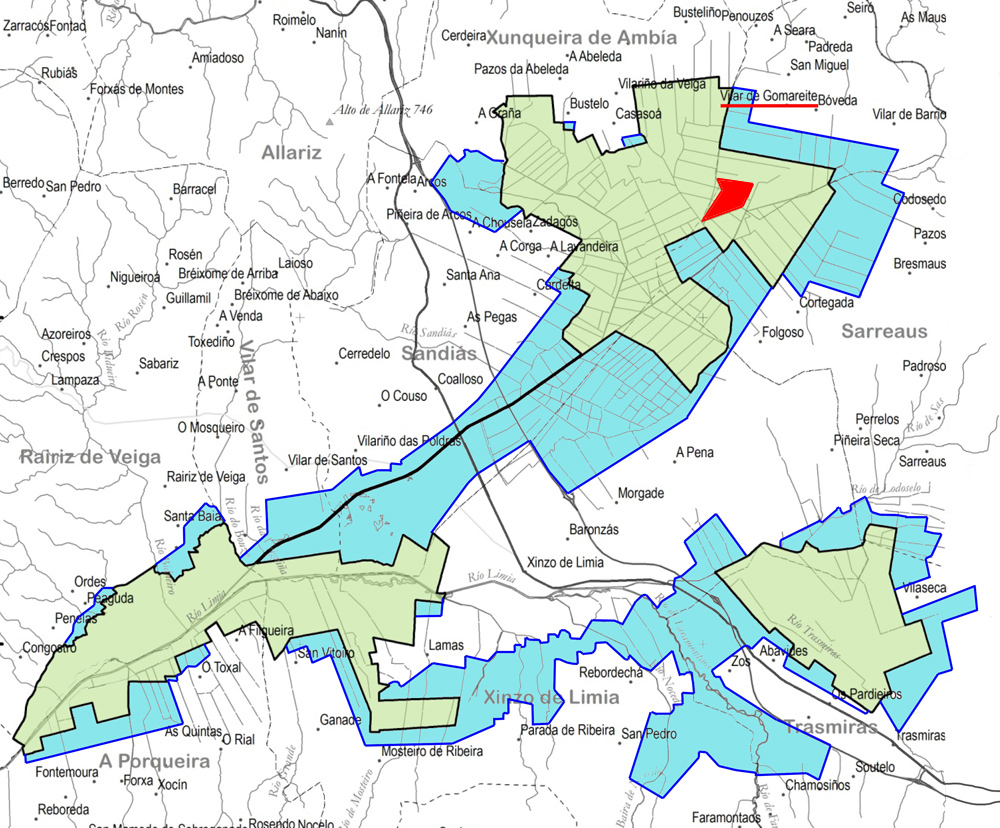
Situación da Veiga de Gomareite (vermello) con respecto á ZEPA de A Limia (verde) e a súa Zona Periférica de Protección (azul) /
Location of Veiga de Gomareite (in red) regarding the SPA of A Limia (in green) and its Protected Outlying Area (in blue)
Previous situation of Veiga de Gomareite
The “Veiga” (alluvial floodplain in Galician) in Vilar de Gomareite has a total surface of 70 ha and is located in the south-western edge of the municipality of Vilar de Barrio, right in the convergence of Xunqueira de Ambía and Sarreaus (both municipalities in the north-east area of the A Limia plain). Years ago, it was seasonally covered by the waters of Antela lagoon, and nowadays is entirely included in the ZEPA of A Limia. According to the joint owners of mountain land shared with Vilar de Gomareite, the “veiga” is divided in batches rented out to different co-proprietors.
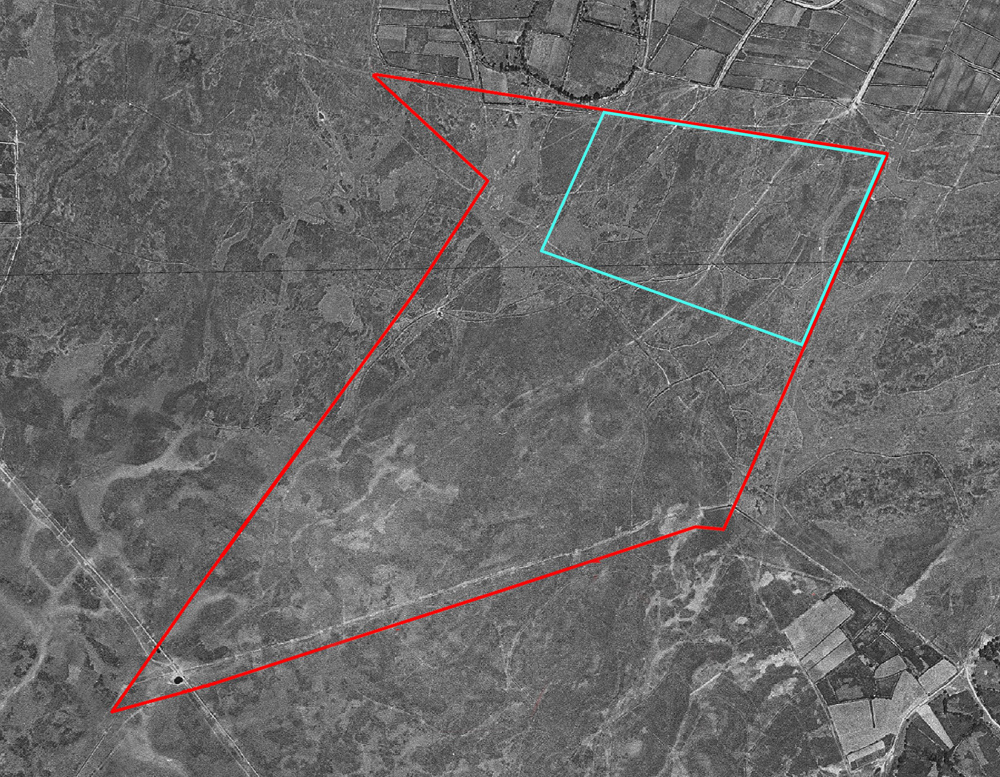
Veiga de Gomareite (polígono vermello) en 1955 e sector cun acordo de Custodia do Territorio entre SGHN e un gandeiro (polígono azul) /
Veiga de Gomareite (red polygon) and the area with a land stewardship agreement between SGHN and a farmer (blue polygon) in 1955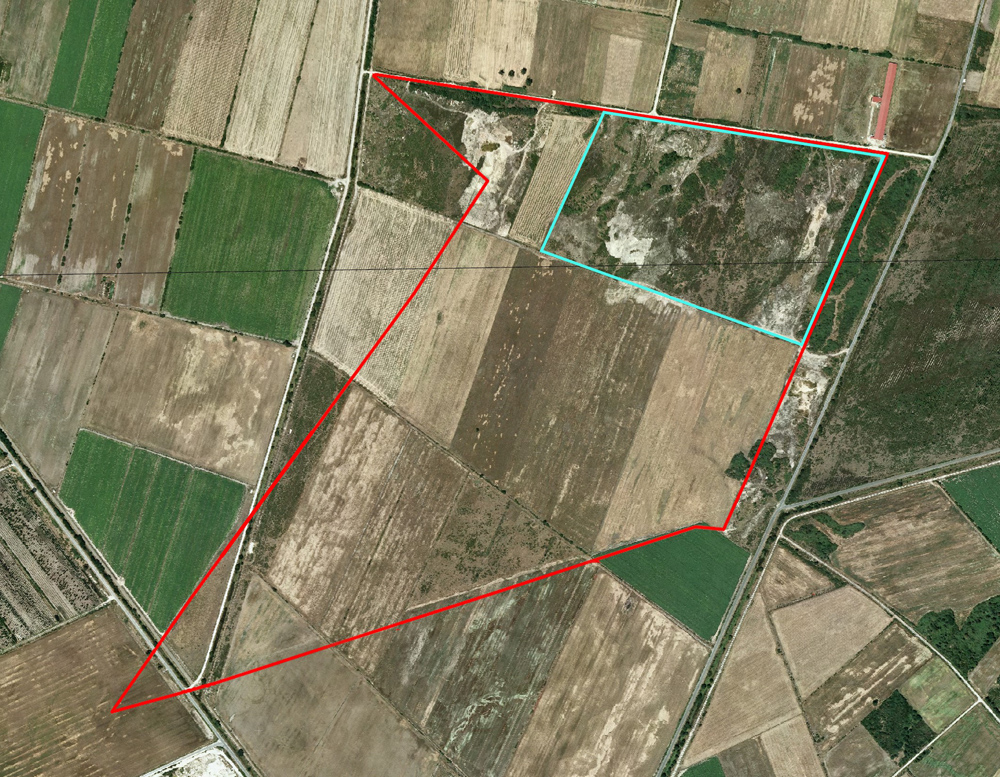
Veiga de Gomareite (polígono vermello) en 2011e sector cun acordo de Custodia do Territorio entre SGHN e un gandeiro (polígono azul) /
Veiga de Gomareite (red polygon) and the area with a land stewardship agreement between SGHN and a farmer (blue polygon) in 2011
In the barren northern part of Veiga de Gomareite the traditional landscape of the margins of the ancient lagoon of Antela and its perimetral “veigas” are still represented with temporary ponds and a mosaic of more-or-less-humid thickets, as well as grasslands of enormous environmental value. Due to the preservation of this traditional landscape and to the temporary flood, the barren part of Veiga de Gomareite still has a remarkable representation of rare species or fauna included in the Galician Catalogue of Endangered Species (Galician Decree 88/2007). Among these, there are Orchis fragans, Serapias lingua, Serapias cordigera, Eryngium viviparum, Lepidurus apus, Gasterosteus gymnurus (stickleback), Pelobates cultripes (western spadefoot or Iberian spadefoot toad), Hyla molleri (Iberian tree frog), Circus cyaneus (hen harrier), Circus pygargus (Montagu’s harrier), Tetrax tetrax (little bustard), Burhinus oedicnemus (Eurasian stone curlew), Charadrius dubius (little ringed plover), Vanellus vanellus (northern lapwing), Gallinago gallinago (common snipe) and Numenius arquata (Eurasian curlew).
Land stewardship agreement in Veiga de Gomareite
To preserve these remarkable environmental assets it is very convenient to keep traditional extensive cattle farming and stationary flooding in a section of the plot. Furthermore, it is also essential to eliminate the main endangering factors, especially waste and debris dumping and other unsustainable activities, aggressive towards for the environment, such as the invasion of blackberries and high bushes.
In this context, SGHN considered the necessity of demonstrating that the recovery of wetlands and endangered species is necessary and possible from a global-integrative perspective. It would involve collaborating with the primary sector (farming and agriculture), and considering all the biodiversity (flora, invertebrates, fish, amphibians, reptiles, birds, and mammals). To this end, on 5 June 2014 (the World Environment Day) the co-proprietary which has rented out the 16 ha in blue on the aerial photograph, signed with SGHN a land stewardship agreement for the barren patch in Veiga de Gomareite.
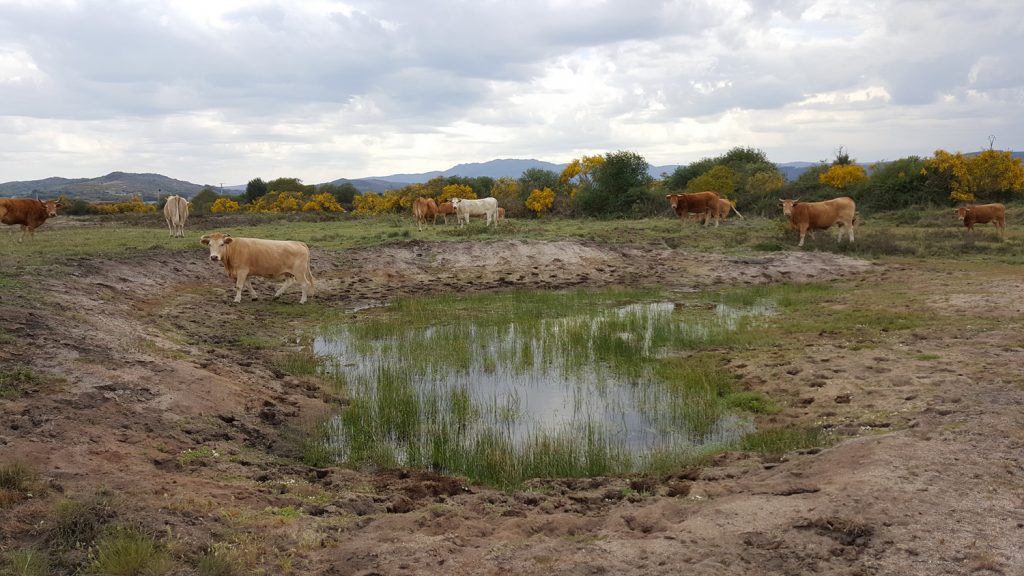
Cows in a restored area of Veiga de Gomareite
Performance of SGHN in Veiga de Gomareite
According to the land stewardship agreement, 7 days of volunteer cleaning have been organised. The cost of waste management was paid by SGHN (3), Xarxa de Custòdia del Territori (2), and 2017 Sponsorship Programme “Libera Naturaleza sin basura” of SEO/BirdLife-Ecoembes (3). These institutions helped to remove and manage 26 m3 of a mix of diverse debris and waste, 19 m3 of plastic, 2 m3 of wood and log, 1.2 m3 of glass, and 58 tyres.
There were also developed respective projects with the “financial support and non productive investments for the implementation of agri-environmental and climate objectives within the municipalities included in the network Natura 2000, co-funded by the European Agricultural Fund for Rural Development (EAFRD) within the framework of the Galician Rural Development Programme in 2014-2020”. The first one of them was developed between December 2016 and January 2017, and the second, from August to September 2018. These projects made it possible to clean up of 2.2 ha and to manage of the materials under it: a) withdrawal and delivery to the authorised waste disposal services of 120 m3 of waste, and b) recovery of 500 m3 of stacked stones, which were later used to build part of two walls in the northern and in the southern borders (with help from SGHN volunteers).
Current situation of Veiga de Gomareite
The objective of recovering the “veiga”, of extending the flooding by removing materials randomly dumped over the years, and recovering traditional extensive farming is now a reality. Even if the stages which are already programmed can be improved, it is an incontrovertible truth. Today, the 16 ha of Veiga de Gomareite recovered by SGHN look like they did before the drought of lagoon of Antela.
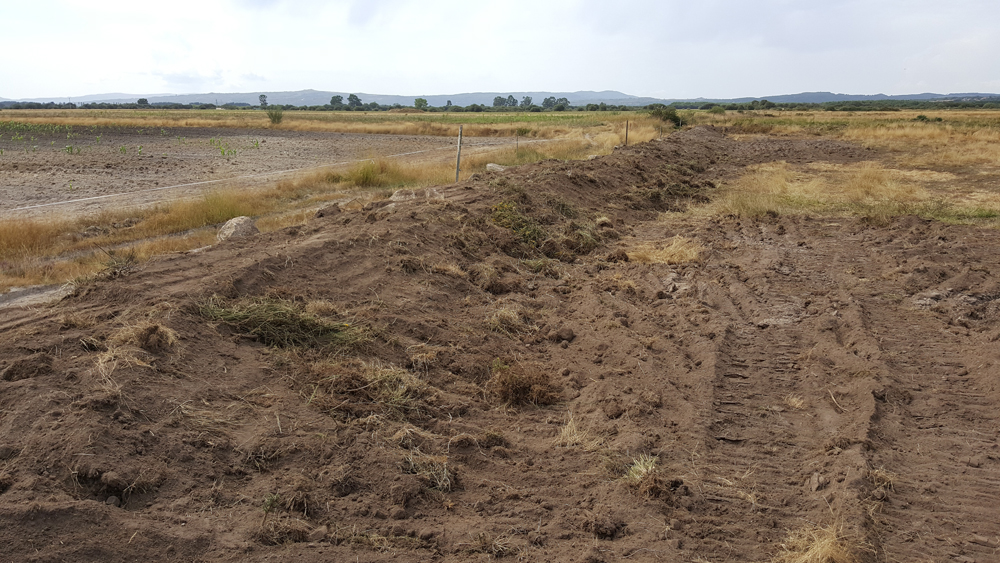
Veiga de Gomareite after the works in September2018
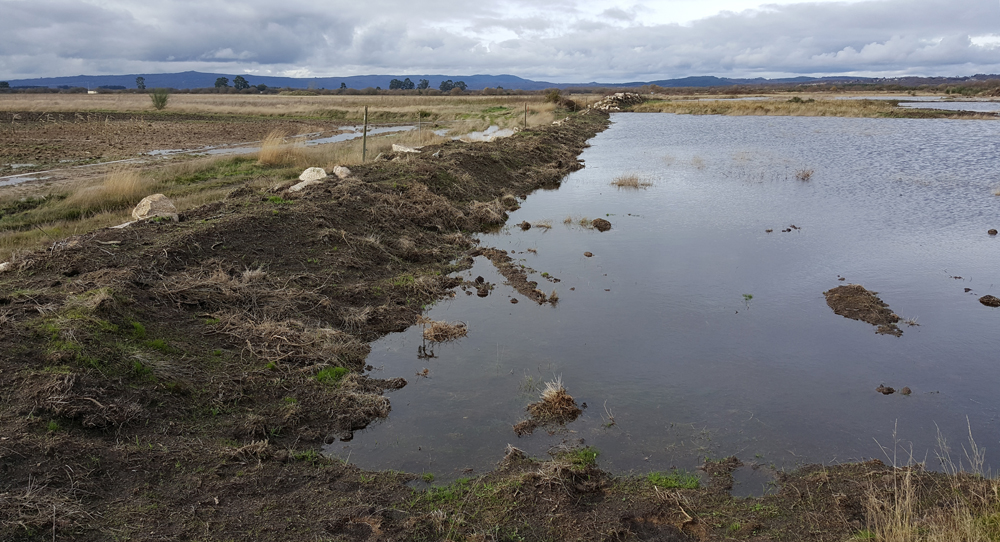
Veiga de Gomareite in late 2018
During winter and spring, the “veiga” is partially covered by a layer of shallow water. This is why, Eryngium viviparum population is protected from frosts, and a diversity of fauna has shelter and food. There are invertebrates of a very restricted distribution as Lepidurus apus, endangered amphibians like the western spadefoot (Pelobates cultripes), and the Iberian tree frog (Hyla molleri), and a huge diversity of birds, both migrating or breeding in the area: grey herons (Ardea cinerea), white storks (Ciconia ciconia), ducks (Anas platyrhynchos, A. acuta, A. crecca, A. clypeata) and waders such as the common snipe (Gallinago gallinago), black-winged stilt (Himantopus himantopus), sandpipers (Tringa totanus, T. nebularia, T. ochropus), and, of course, northern lapwings (Vanellus vanellus).
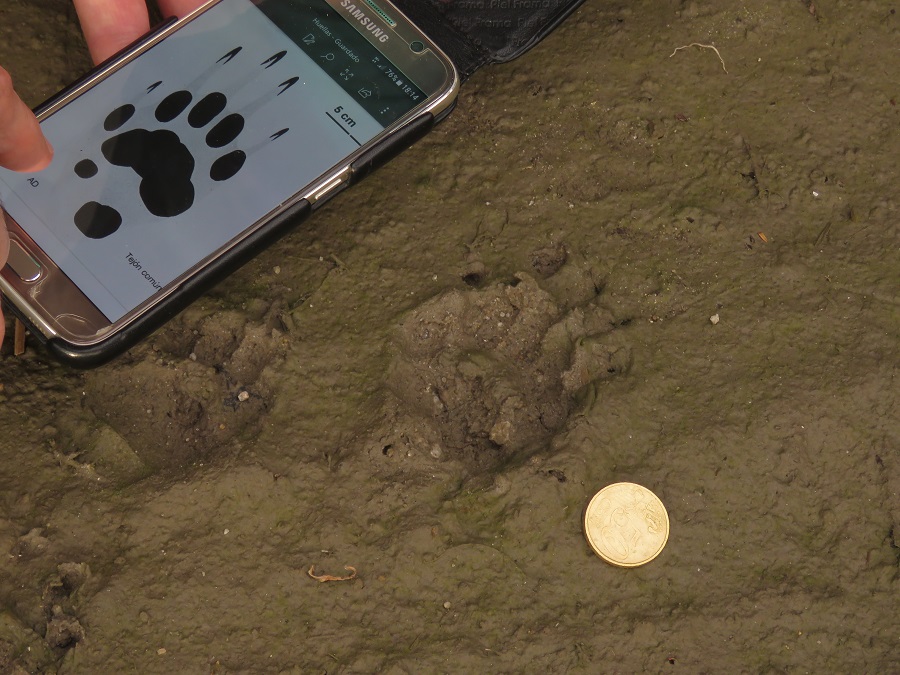
Pegada de teixugo (Meles meles) /
Footprint of a European badger (Meles meles)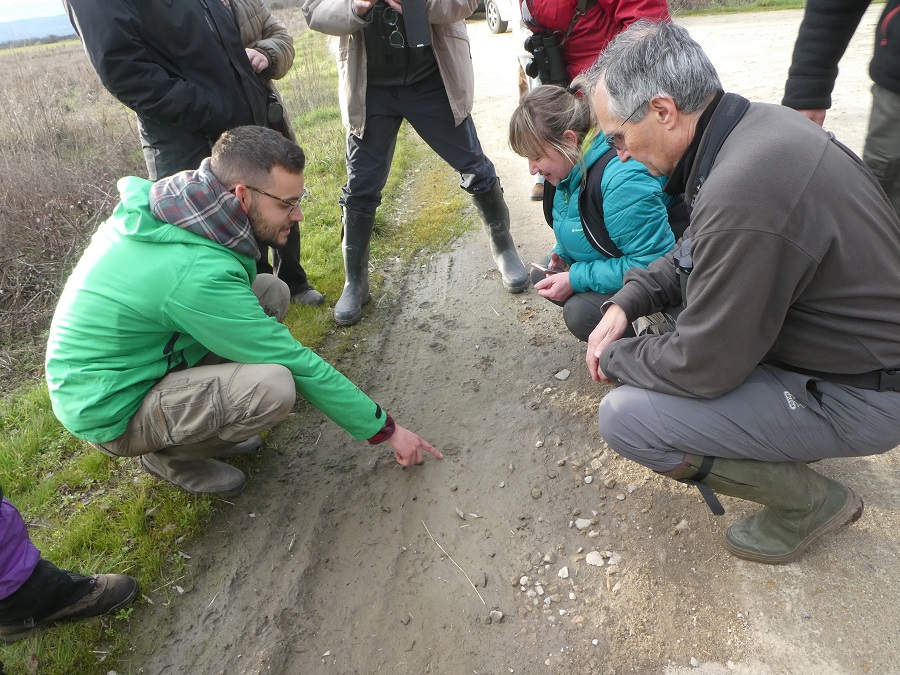
Rastro de teixugo (Meles meles) /
Trail of a European badger (Meles meles)
SGHN volunteering days
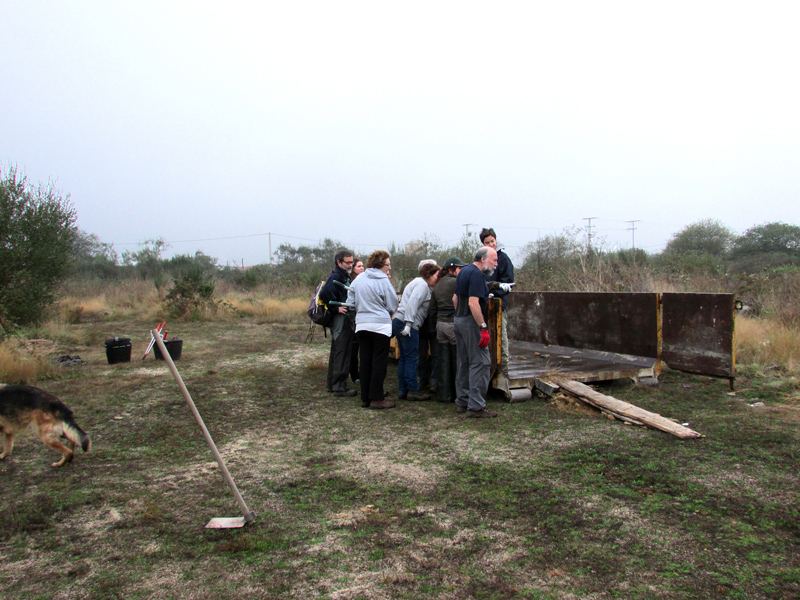
Empty container 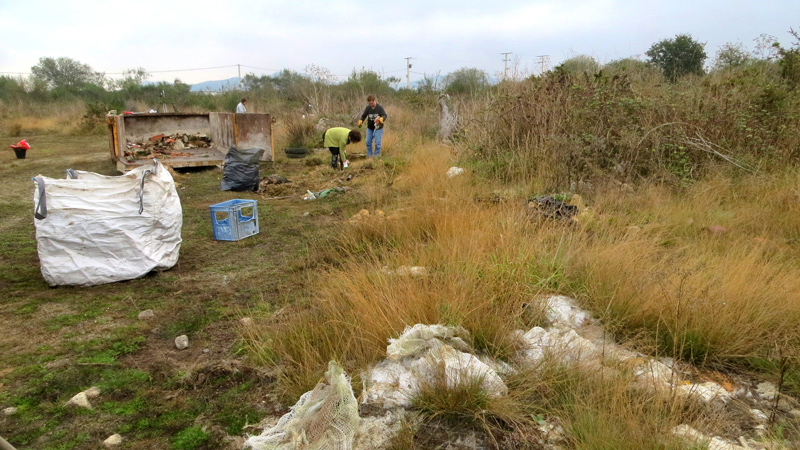
Starting to work 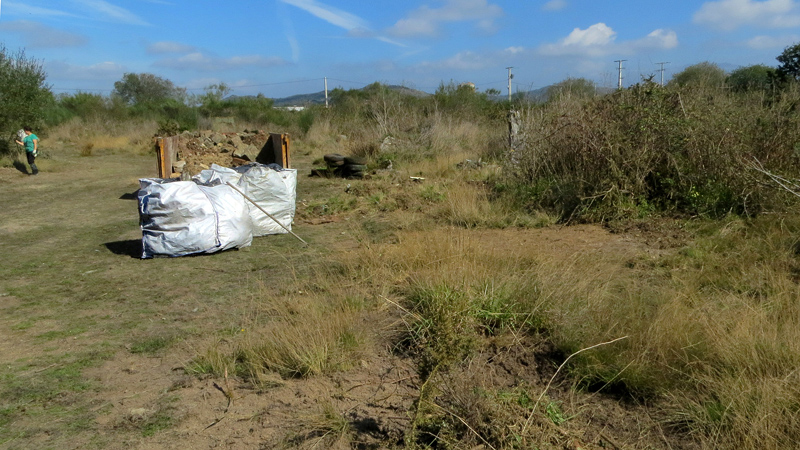
Cheer up! You’re halfway done! 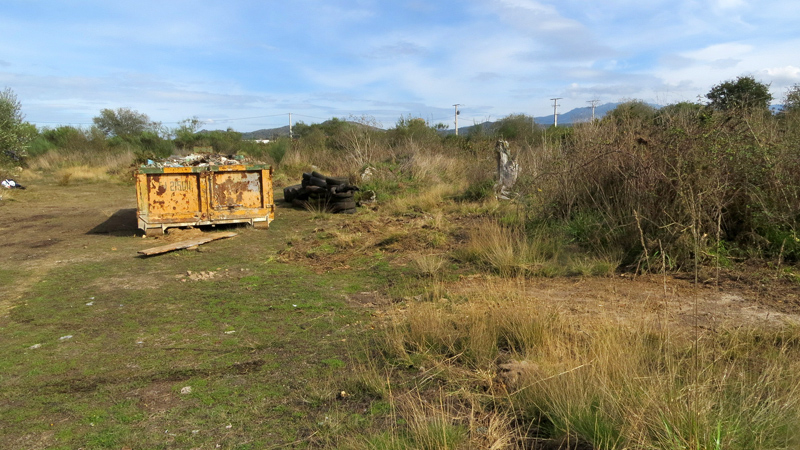
Full container 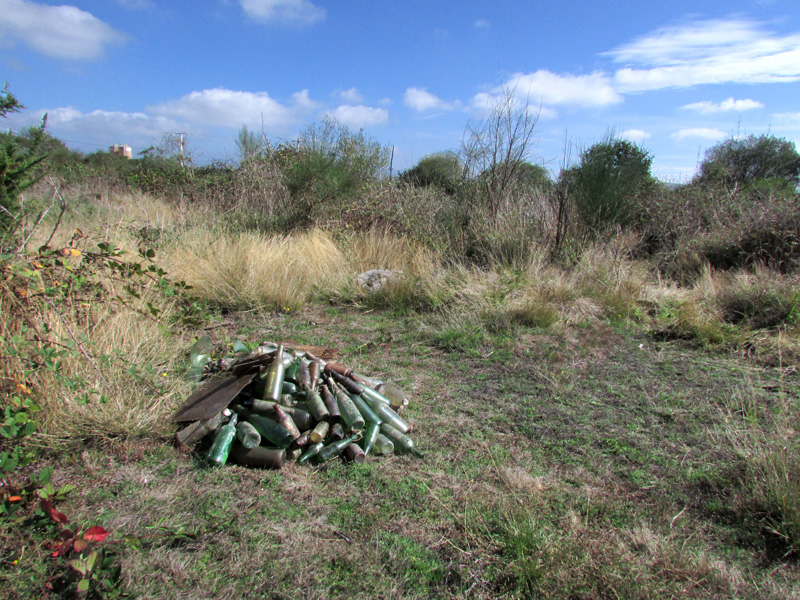
One fewer pile of bottles
SGHN volunteering days – Xarxa de Custòdia del Territori
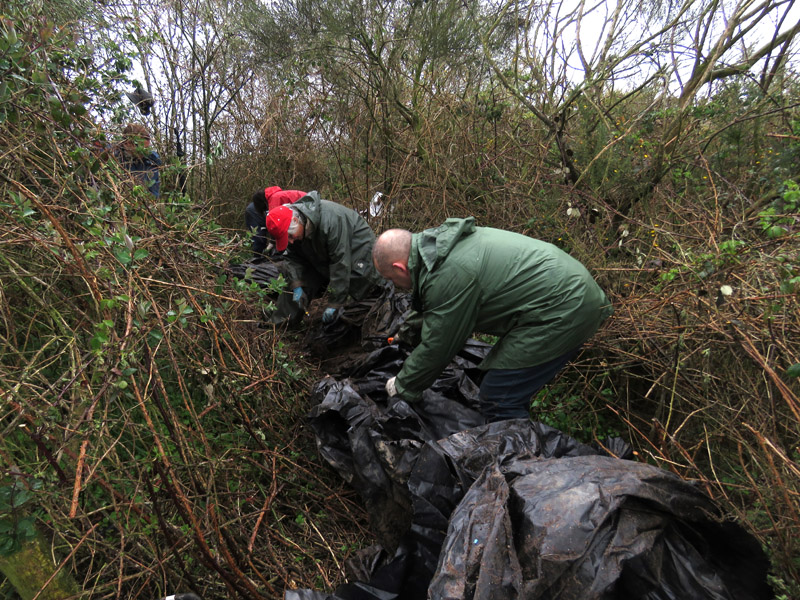
“Plasticolítico superior” /
“Upper plasticlithic”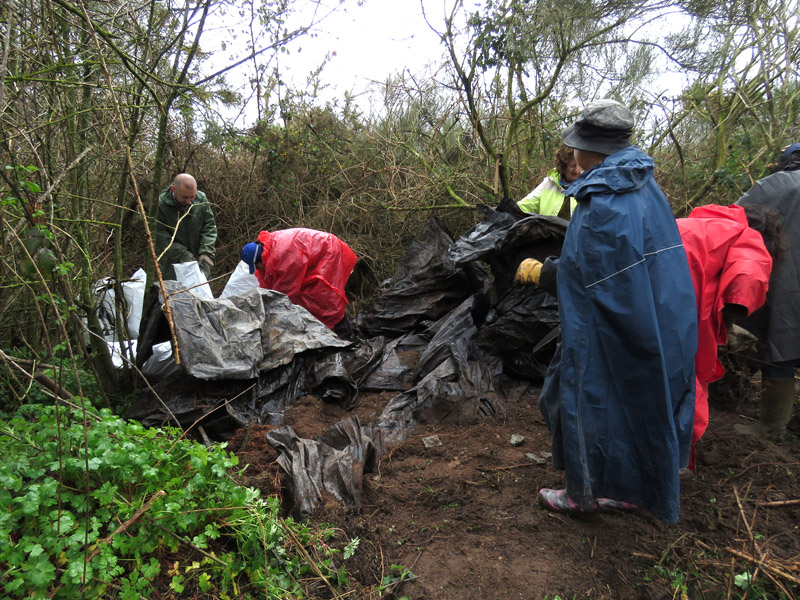
“Plasticolítico inferior” /
“Lower plasticlithic”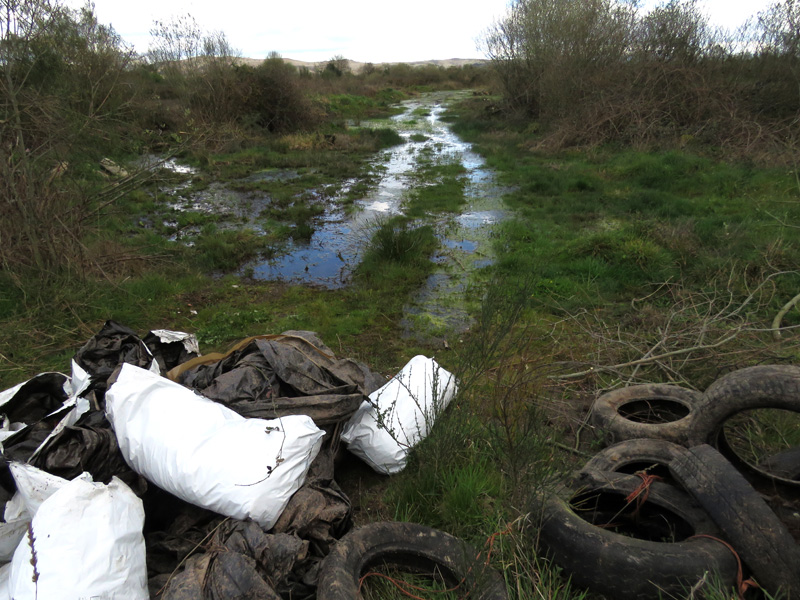
Pneumáticos e plásticos /
Tyres and plastics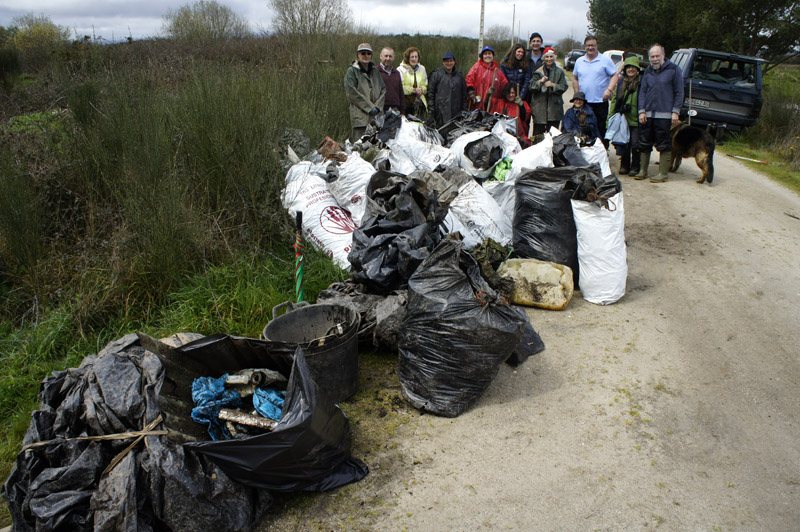
Voluntarios día 9-04-2016 /
Volunteers on 9 April 2016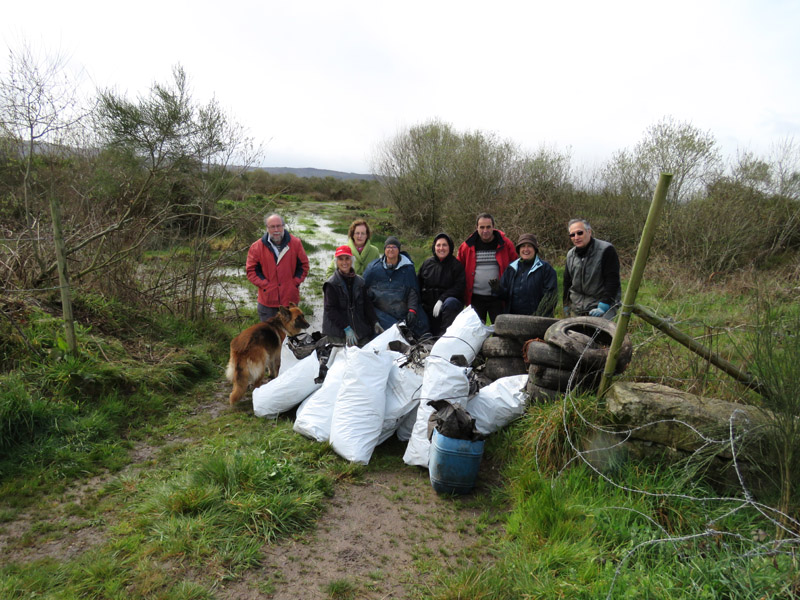
Voluntarios día 10-04-2016 /
Volunteers on 10 April 2016
SGHN volunteering days – Libera Naturaleza sin basura 2017 (SEO-ECOEMBES)
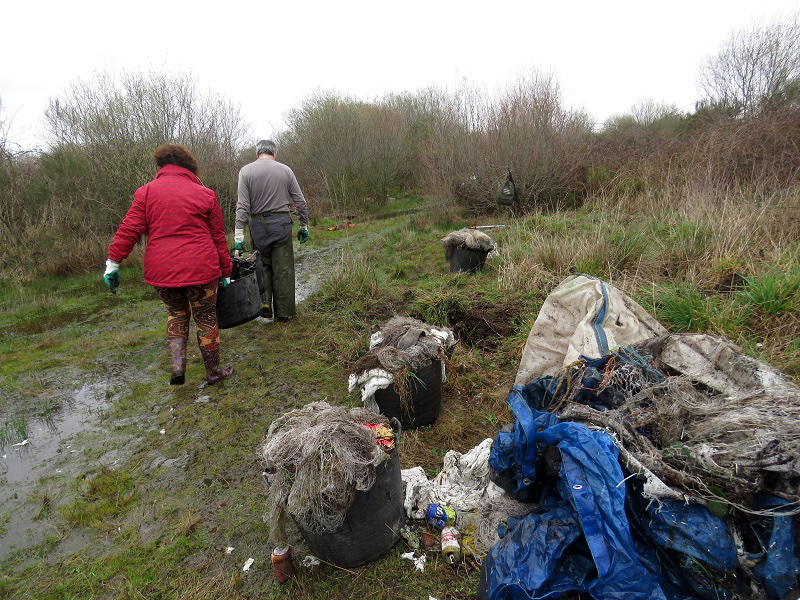
Empezar por algures /
Starting somewhere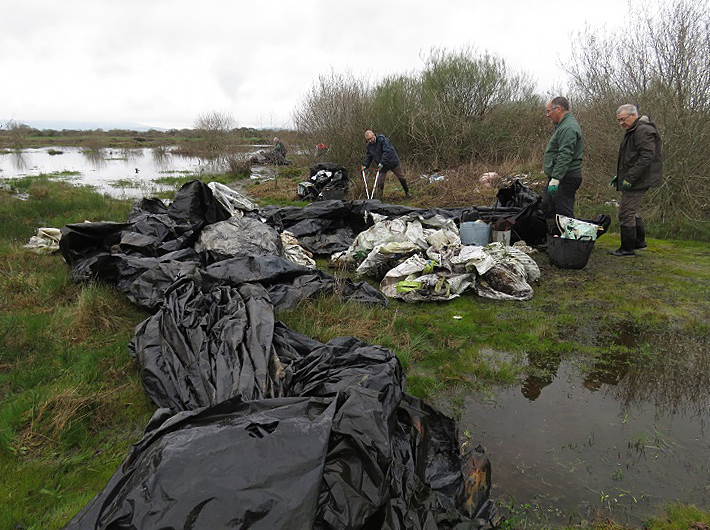
Xuntando plásticos /
Collecting plastic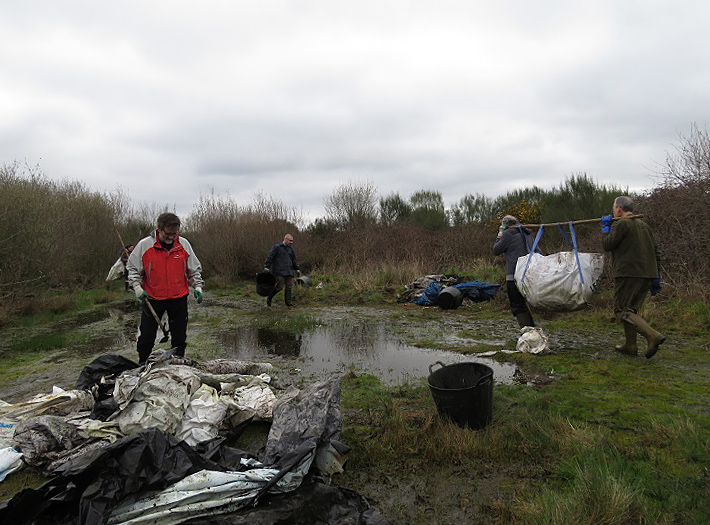
Carrexando lixo /
Carrying waste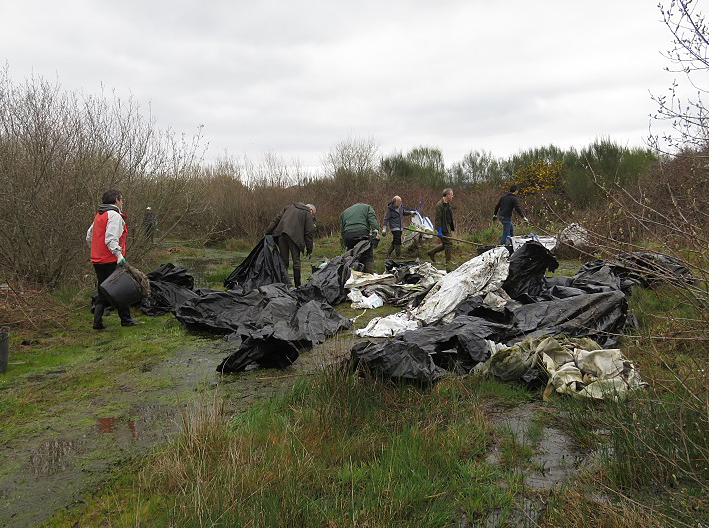
Recollendo máis plásticos /
Collecting more plastic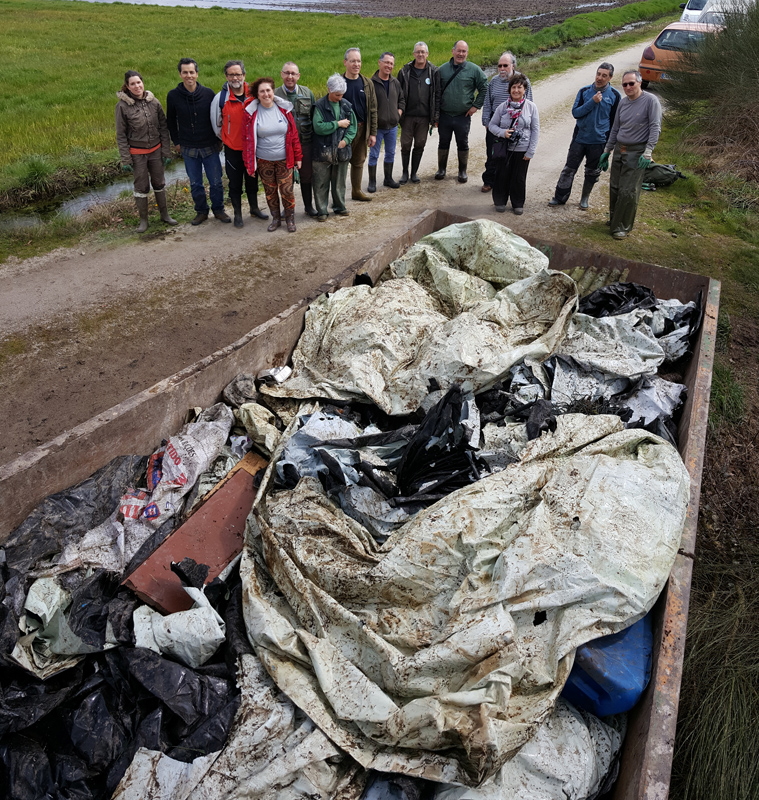
Foto de familia co contedor cheo (14-04-2018) /
Family photo with full container (1 April 2018)
Project SGHN-PDR Galicia 2016-17 network Natura 2000
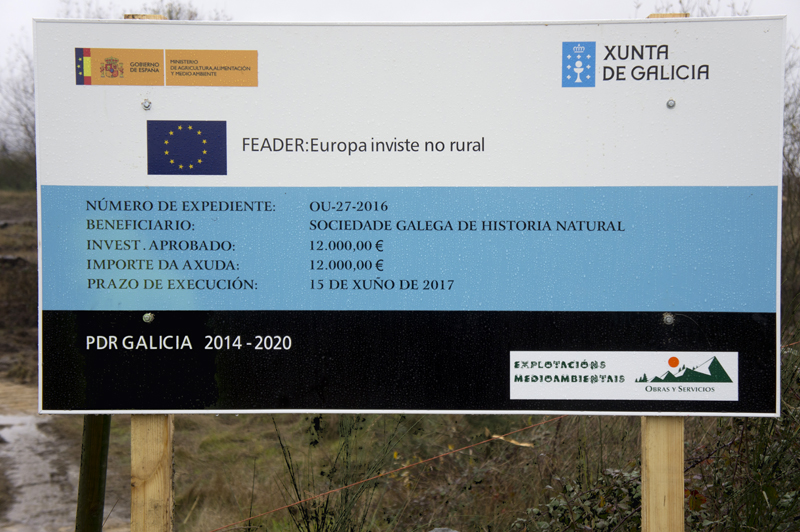
Cartel de obra 2016-17 /
Poster of 2016-17 work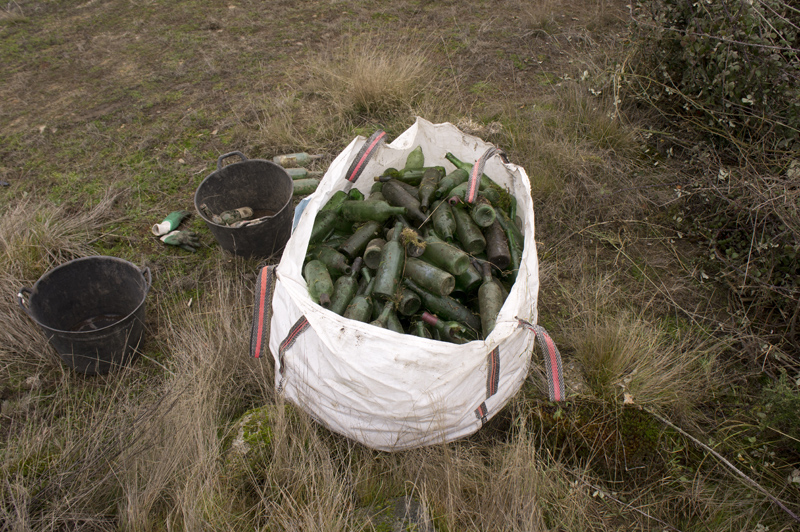
335 botellas xuntas!!! /
335 bottles altogether!!!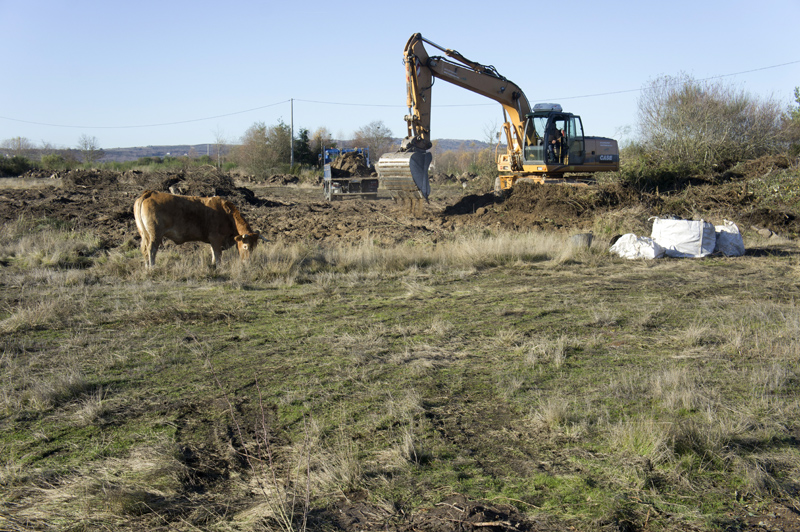
“Adxunta ao director de obra” supervisando /
“Deputy constructor manager” supervising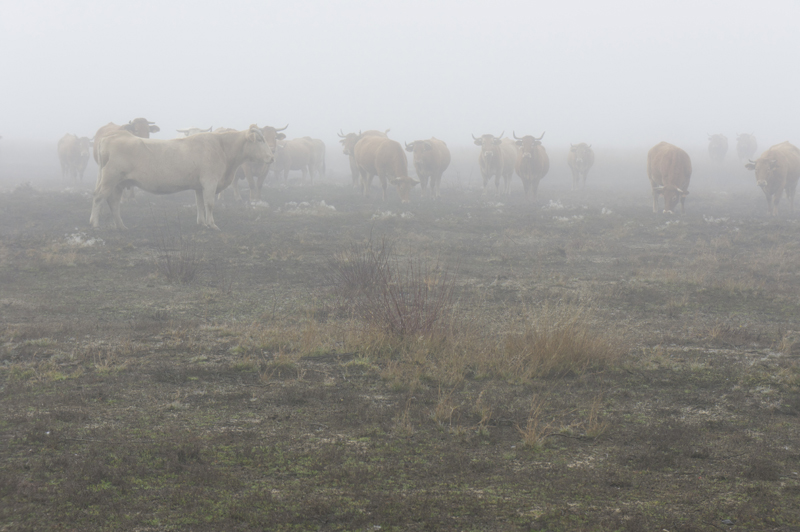
“Vacas na néboa” vixiando as obras /
“Cows in the fog” supervising works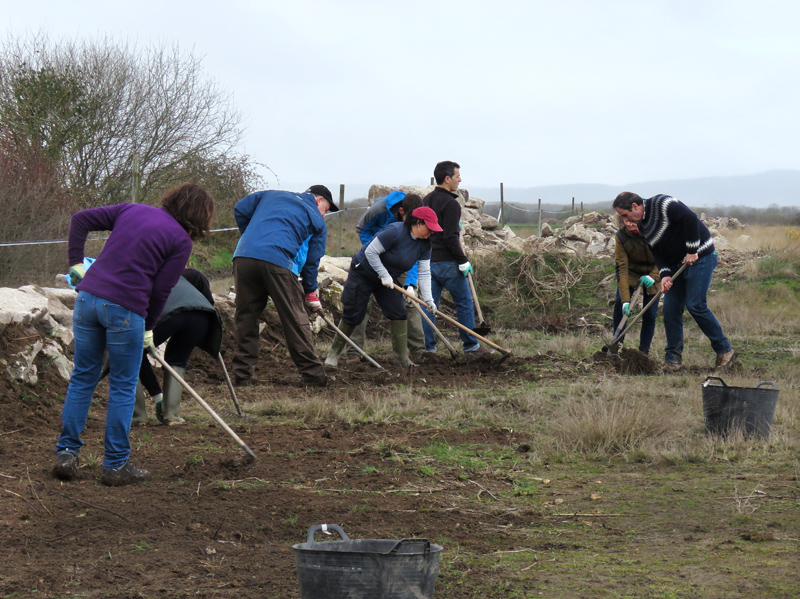
Perfilando a man o traballo das máquinas /
Delineating by hand the work machines will complete
Project SGHN – PDR Galicia 2018-19 network Natura 2000
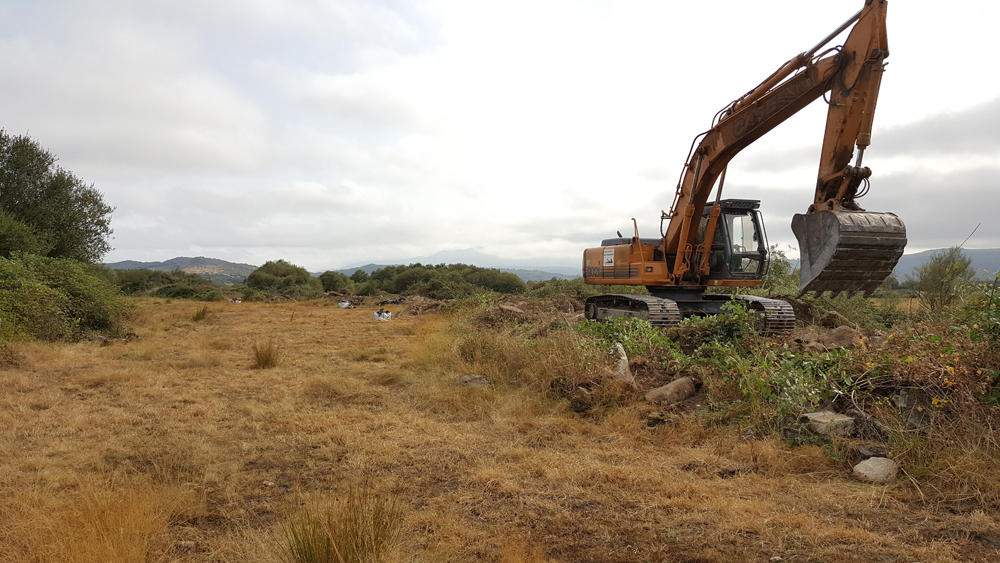
Comezando o traballo
Starting to work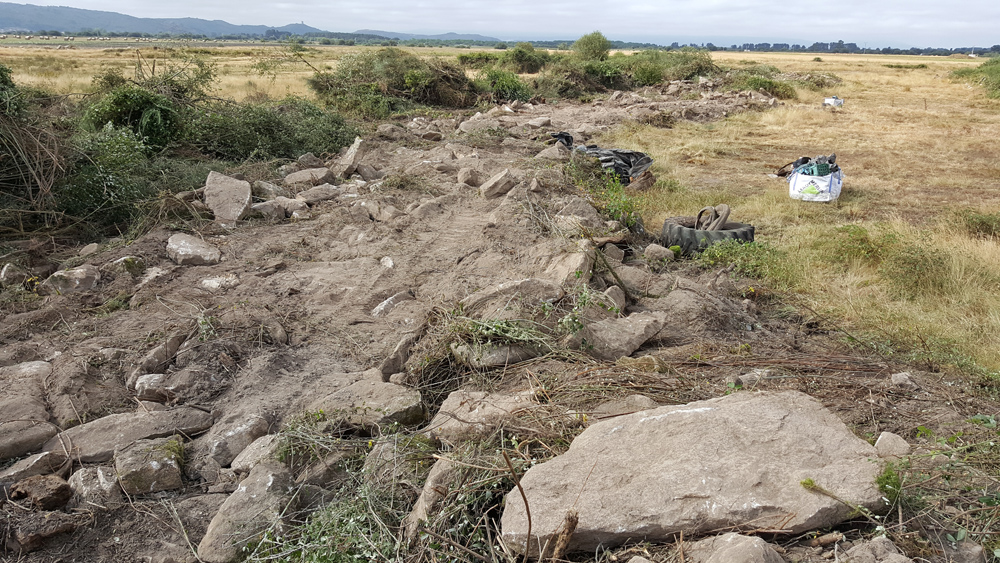
Pedras e lixo /
Stones and waste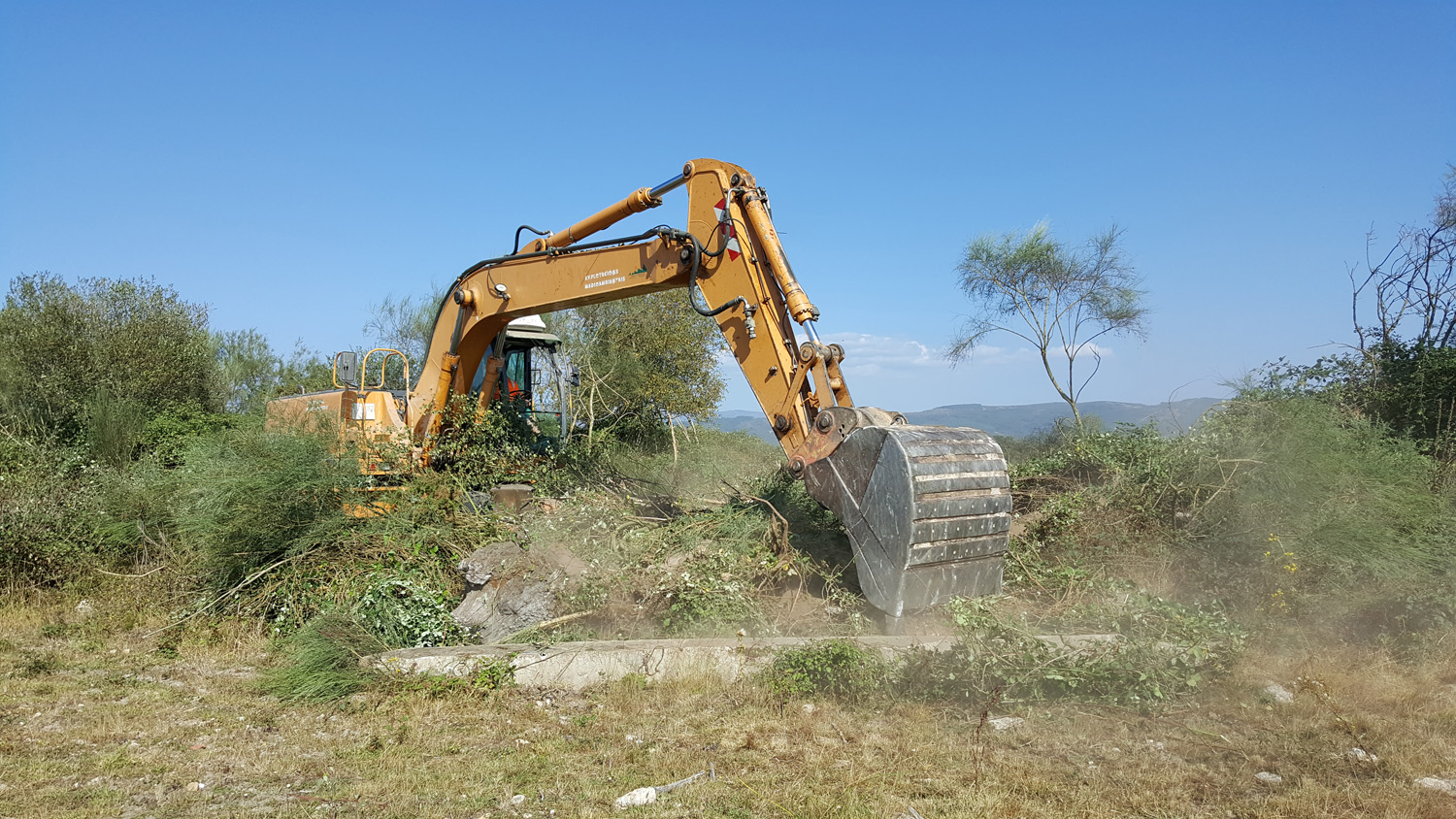
Retirando unha viga /
Removing a beam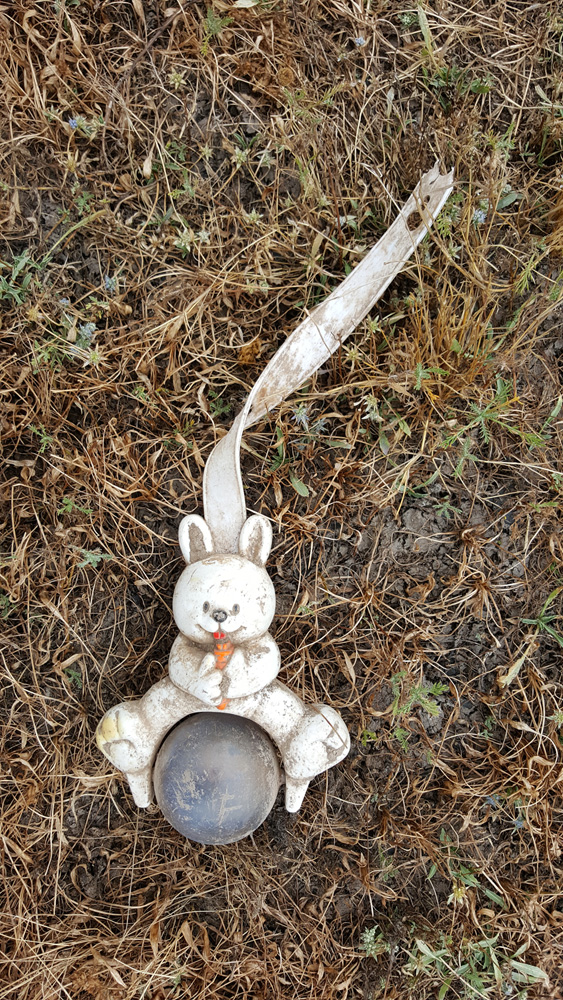
Si, tamén había un axouxere! /
Yes, there was also a rattle!!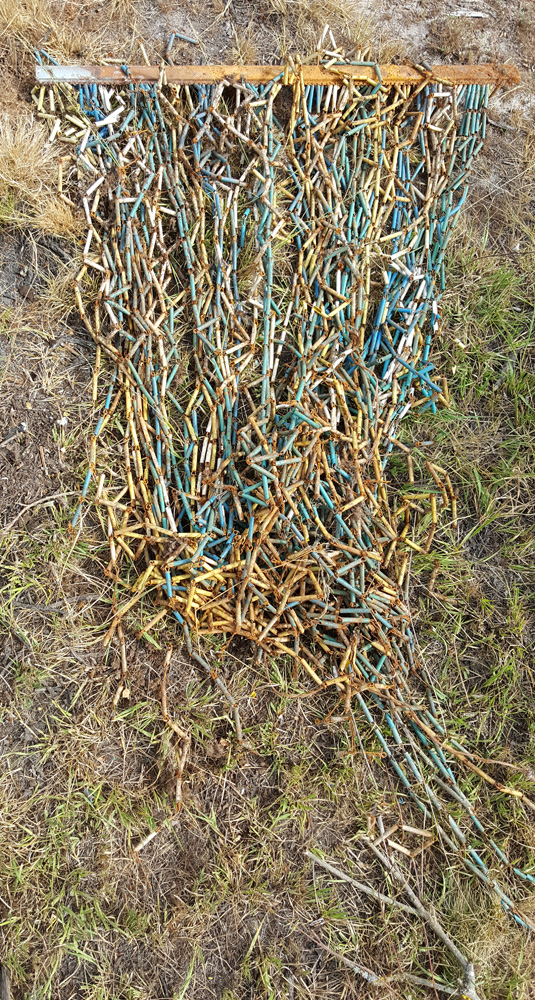
…e unhas cortinas /
… and some curtains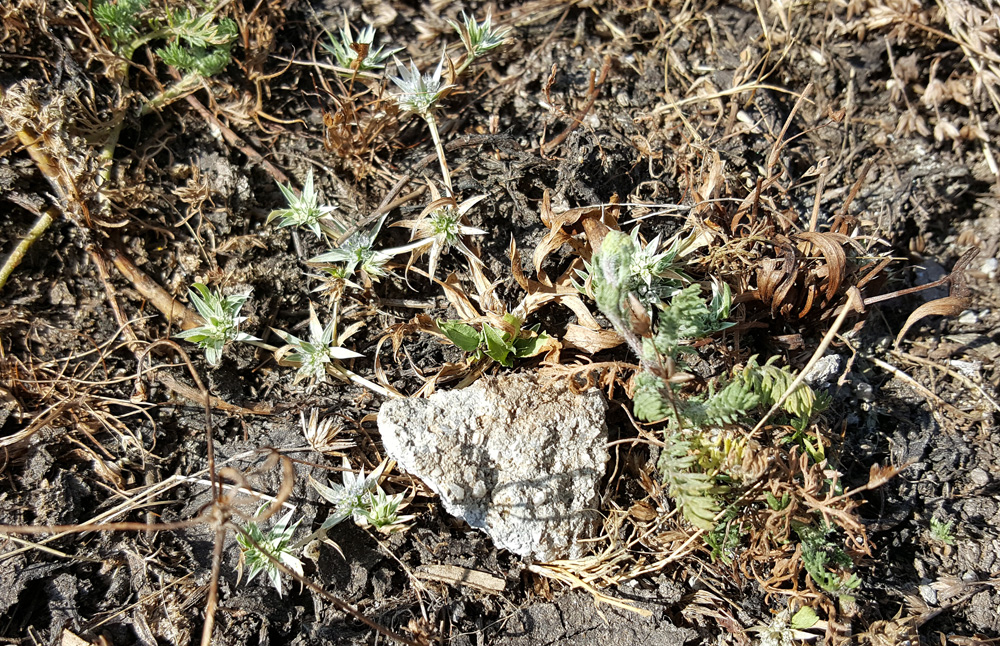
Eryngium viviparum e anaco de entullo /
Eryngium viviparum and a piece of debris
We encourage you to help!
Do you want to be a BEÓN-FACTOR and contribute to the growth of this small wetland? You can take part by donating using account number: ES63 2080 0200 4830 4012 7702 (BIC/SWIFT Code: CAGLESMMXXX) or through our Paypal account: sghn@sghn.org (in this case specify: “Sección Antela”).
- Beón: (noun, botany). The most emblematic plant not just of the Antela lagoon or lake Bión/Beón, but also of the whole humid complex Limia-Antela.
- Benefactor: (noun). Person who does good.
- Beón-factor: (noun, neologism). Person who does good to the water ecosystems in Limia-Antela.
Text translated by María Estévez Rodríguez (student of the Degree of Translation and Interpretation of the University of Vigo)



